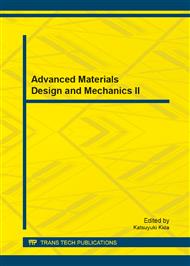p.88
p.97
p.101
p.104
p.111
p.115
p.119
p.123
p.128
Inorganic Nanoparticles Modified Molecular Beacons as Fluorescent DNA Biosensors
Abstract:
This study reports inorganic nanoparticles modified molecular beacons as fluorescent DNA biosensors. MBs were modified by using CdTe quantum dots as energy donors and 4-(4'-(dimethylamino) phenylazo) benzoic acid, black hole quencher 1 and Au nanoparticles as energy acceptors, respectively. CdTe quantum dots were linked to molecular beacons when 1-ethyl-3-(3-dimethylaminopropyl) carbodi-imide hydrochloride was added. The fluorescence intensity of the modified molecular beacons decreased tremendously compared to the fluorescence intensity of CdTe quantum dots, which indicated that the fluorescence resonance energy transfer occurred between the donors and acceptors. The results indicated that this type of molecular beacons has high specificity and can be used to distinguish complementary DNA and its mutants.
Info:
Periodical:
Pages:
111-114
Citation:
Online since:
August 2013
Authors:
Price:
Сopyright:
© 2013 Trans Tech Publications Ltd. All Rights Reserved
Share:
Citation:


